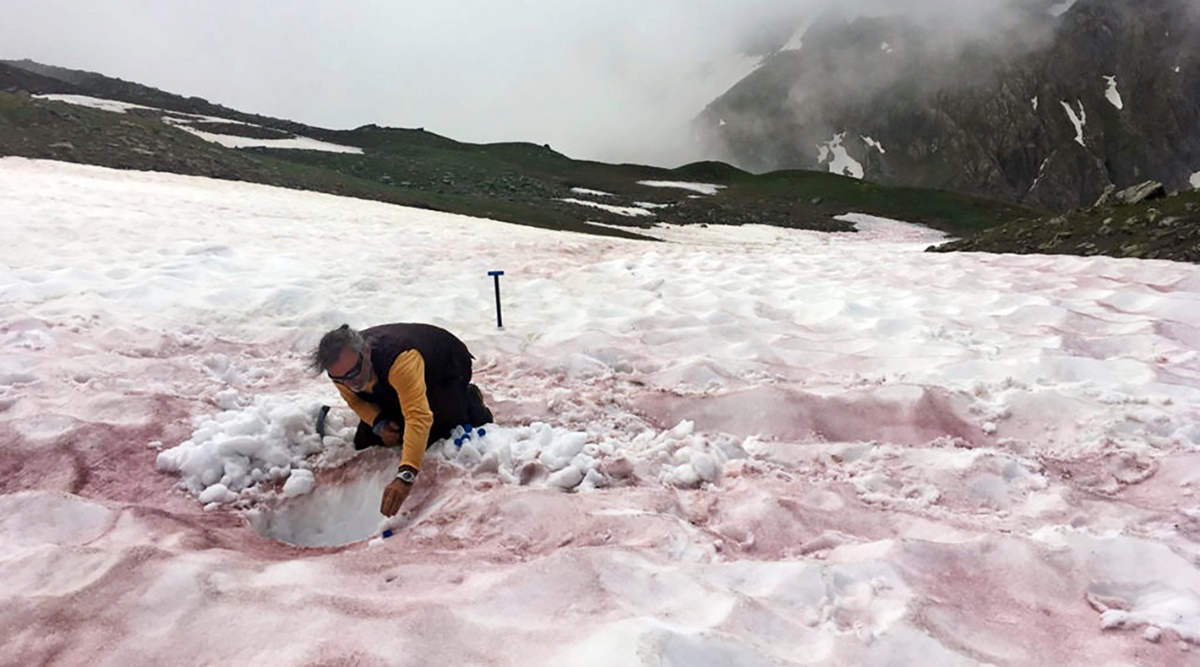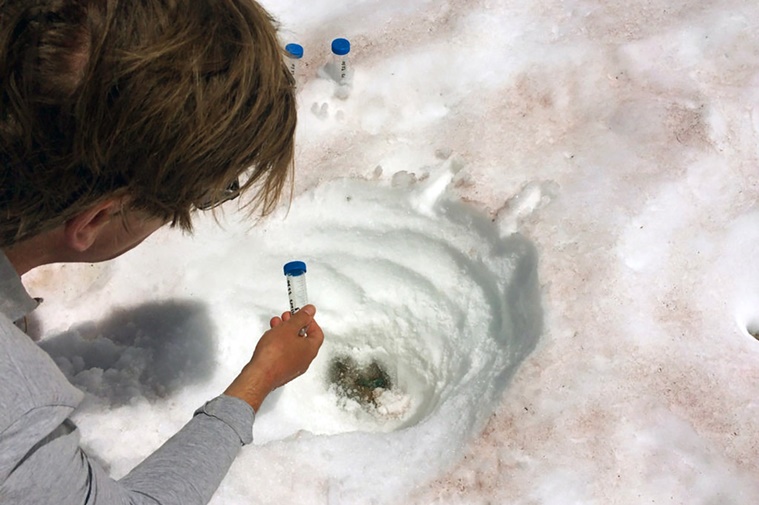
Written by Cara Giaimo
Winter via spring, the French Alps are wrapped in austere white snow. However as spring turns to summer time, the stoic slopes begin to blush. Components of the snow tackle vibrant colours: deep pink, rusty orange, lemonade pink. Locals name this “sang de glacier,” or “glacier blood.” Guests typically go along with “watermelon snow.”
In actuality, these blushes come from a humiliation of algae. In recent times, alpine habitats everywhere in the world have skilled an uptick in snow-algae blooms — dramatic, surprisingly hued aggregations of those usually invisible creatures.
Whereas snow-algae blooms are poorly understood, the very fact they’re taking place might be not an excellent signal. Researchers have begun surveying the algae of the Alps to higher grasp what species reside there, how they survive and what may be pushing them over the bleeding edge. A few of their preliminary findings had been printed this week in Frontiers in Plant Science.
Tiny but highly effective, the plantlike micro organism we name algae are “the idea of all ecosystems,” mentioned Adeline Stewart, an writer of the research who labored on it as a doctoral pupil at Grenoble Alpes College in France. Due to their photosynthetic prowess, algae produce a considerable amount of the world’s oxygen and type the muse of most meals webs.
However they generally overdo it, multiplying till they throw issues out of stability. This could trigger poisonous pink tides, scummy freshwater blooms and unsettling glacier blood.
The red-colored Sanguina algae, proven below a microscope, taken from a pattern of “watermelon snow.” (The New York Occasions/File)
Whereas it’s unclear precisely what spurs the blooms, the colour — typically pink, however typically inexperienced, grey or yellow — comes from pigments and different molecules that the snow algae use to guard themselves from ultraviolet mild. These hues take in extra daylight, inflicting the underlying snow to soften extra rapidly. This could change ecosystem dynamics and hasten the shrinking of glaciers.
Impressed by rising experiences of the phenomenon, researchers at a number of alpine institutes determined to show their consideration from algae species in far-flung habitats to these “that develop subsequent door,” mentioned Eric Maréchal, head of a plant physiology lab at Grenoble Alpes College and a frontrunner of the undertaking.
As a result of so many various kinds of algae can reside and bloom within the mountains, the researchers started with a census in elements of the French Alps to search out out what grows the place. They took soil samples from 5 peaks, unfold over numerous altitudes, and looked for algal DNA.
They discovered that many species are inclined to choose explicit elevations and have most certainly advanced to thrive within the circumstances discovered there. One key genus, fittingly named Sanguina, grows solely above 6,500 ft.
The researchers additionally introduced some species again to the lab to analyze their potential bloom triggers. Algae blooms happen naturally — the primary written commentary of glacier blood got here from Aristotle, who guessed that the snow had grown furry, pink worms from mendacity round too lengthy.
However human-generated components can worsen such outbursts and make them extra frequent. Excessive climate, unseasonably heat temperatures and influxes of vitamins from agricultural and sewage runoff all play a task in freshwater and ocean algae blooms.
 Many species of algae are inclined to choose explicit elevations and have most certainly advanced to thrive within the circumstances discovered there. Sanguina, as an example, grows solely above 6,500 ft. (The New York Occasions/File)
Many species of algae are inclined to choose explicit elevations and have most certainly advanced to thrive within the circumstances discovered there. Sanguina, as an example, grows solely above 6,500 ft. (The New York Occasions/File)
To see if the identical was true for glacier blood, the researchers subjected the algae to surpluses of vitamins, equivalent to nitrogen and phosphorus. Whereas they haven’t discovered something important to this point, they plan to proceed this line of testing, Stewart mentioned.
The boundaries of DNA sampling imply that even this research provides an incomplete image of what’s dwelling in and below the snow, mentioned Heather Maughan, a microbiologist and analysis scholar on the Ronin Institute in New Jersey who was not concerned within the research. Nonetheless, it revealed the “unbelievable variety” of alpine algae — underscoring how little we find out about them, in addition to their potential to “function beacons of ecosystem change,” she mentioned.
Within the coming years, the researchers will hold monitor of how species distributions shift over time, which can make clear the general well being of the ecosystem, Stewart mentioned. They may even attempt to set up whether or not temperature patterns correlate with blooms, and start to match species compositions in white versus colourful snow. Finally, they hope to decipher the blood-red message.
“There’s so little that we all know,” she mentioned. “We have to dig deeper.









